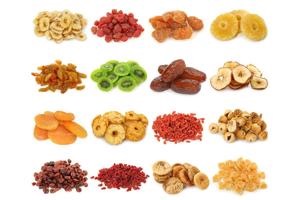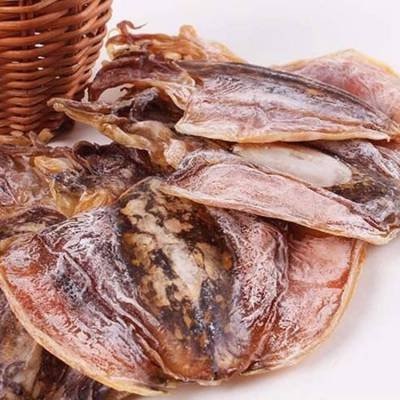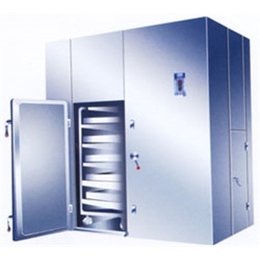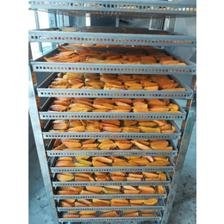
Content Menu
● Introduction
● What is a Heat Pump Dryer?
● How Does a Heat Pump Dryer Work?
● Benefits of Using Heat Pump Dryers
>> Energy Efficiency
>> Preservation of Nutritional Quality
>> Versatility
>> Lower Environmental Impact
● How Much Electricity Does a Heat Pump Dryer Use?
● Choosing the Right Food Dryer for Your Business
>> Understanding Energy Ratings
>> Maintenance Considerations
● OEM Services for Food Dryers
>> Customization Options
>> Quality Assurance
● Real-world Applications of Heat Pump Dryers
>> Commercial Food Processing
>> Home Use
>> Research and Development
● Conclusion
● Related Questions
>> 1. What are the advantages of using a heat pump dryer over traditional drying methods?
>> 2. How long does it take to dry food using a heat pump dryer?
>> 3. Can I use a heat pump dryer for all types of food?
>> 4. What maintenance do heat pump dryers require?
>> 5. Are there any safety concerns with using heat pump dryers?
Introduction
Food dryers are essential appliances in the food processing industry, allowing for the preservation of fruits, vegetables, meats, and herbs through dehydration. Among the various types of food dryers available, heat pump dryers have gained popularity due to their energy efficiency and effectiveness. In this article, we will explore how food dryers work, their benefits, and specifically address the question: How much electricity does a heat pump dryer use?

What is a Heat Pump Dryer?
A heat pump dryer is a type of drying equipment that uses a refrigeration cycle to remove moisture from food products. Unlike traditional dryers that rely on high temperatures to evaporate moisture, heat pump dryers operate at lower temperatures while efficiently recycling heat. This method not only preserves the nutritional quality of the food but also significantly reduces energy consumption.
How Does a Heat Pump Dryer Work?
Heat pump dryers utilize a closed-loop system that involves several key components:
1. Evaporator: Absorbs heat from the air inside the dryer and evaporates refrigerant.
2. Compressor: Increases the pressure of the refrigerant gas, raising its temperature.
3. Condenser: Releases heat into the drying chamber while condensing the refrigerant back into liquid form.
4. Expansion Valve: Lowers the pressure of the refrigerant before it returns to the evaporator.
This cycle allows for efficient moisture removal while maintaining a controlled environment within the drying chamber.
Benefits of Using Heat Pump Dryers
Energy Efficiency
One of the primary advantages of heat pump dryers is their energy efficiency. They consume significantly less electricity compared to conventional dryers. The question *how much electricity does a heat pump dryer use?* is crucial for businesses looking to minimize operational costs. Typically, these dryers use about 30-50% less energy than traditional electric or gas dryers.
Preservation of Nutritional Quality
Heat pump dryers operate at lower temperatures, which helps in preserving the nutritional content and flavor of the food. This is particularly important for health-conscious consumers and businesses focusing on high-quality products.
Versatility
Heat pump dryers can be used for a variety of foods including:
- Fruits (e.g., apples, bananas)
- Vegetables (e.g., tomatoes, carrots)
- Herbs (e.g., basil, thyme)
- Meats (e.g., jerky)
This versatility makes them an attractive option for food processors.

Lower Environmental Impact
By using less electricity and operating more efficiently, heat pump dryers contribute to a reduced carbon footprint. This aligns with global trends towards sustainability and eco-friendly practices in food production.
How Much Electricity Does a Heat Pump Dryer Use?
When considering *how much electricity does a heat pump dryer use*, it's essential to look at various factors:
1. Capacity: Larger units may consume more power but can handle more product at once.
2. Cycle Time: The duration of drying cycles can affect overall energy consumption.
3. Product Type: Different foods require different drying times and temperatures.
On average, a heat pump dryer may consume between 1 to 3 kWh per cycle depending on these factors. For businesses operating multiple cycles daily, this translates into significant savings over time.
Choosing the Right Food Dryer for Your Business
When selecting a food dryer for your operations, consider these factors:
- Energy Efficiency Ratings: Look for models with high energy efficiency ratings to reduce electricity usage.
- Capacity Needs: Assess your production needs to choose an appropriately sized dryer.
- Features: Some models come with advanced features like programmable settings and humidity sensors.
Understanding Energy Ratings
Energy ratings provide insight into how much electricity an appliance consumes during operation. Look for certifications such as Energy Star or other local equivalents that indicate superior energy performance.
Maintenance Considerations
Regular maintenance is crucial for ensuring that your heat pump dryer operates efficiently over time. Key maintenance tasks include:
- Cleaning filters regularly to prevent clogs
- Inspecting seals and gaskets for wear
- Ensuring proper airflow around the unit
Neglecting maintenance can lead to increased energy consumption and reduced performance.
OEM Services for Food Dryers
As a manufacturer specializing in OEM services for food dryers, we offer tailored solutions for brands looking to enhance their product offerings. Our expertise includes:
- Custom design based on client specifications
- High-quality materials ensuring durability
- Energy-efficient technologies that align with modern standards
Partnering with us allows brands to provide high-performance equipment while focusing on their core business operations.
Customization Options
We understand that each client has unique needs. Therefore, we offer customization options such as:
- Size variations to fit different production scales
- Specific drying technologies tailored to particular food types
- Branding opportunities for private label products
Quality Assurance
Quality assurance is paramount in our manufacturing process. We conduct rigorous testing on all our products to ensure they meet international standards for safety and efficiency.
Real-world Applications of Heat Pump Dryers
Heat pump dryers are increasingly being adopted across various sectors in the food industry due to their efficiency and versatility.
Commercial Food Processing
In commercial settings, heat pump dryers are used extensively for:
- Producing dried fruits like apricots and raisins
- Creating vegetable chips from kale or sweet potatoes
- Making jerky from various meats
These applications benefit from precise temperature control and reduced energy costs.
Home Use
While primarily used in commercial settings, home versions of heat pump dryers are also becoming popular among health-conscious consumers who wish to dehydrate their own snacks at home.
Research and Development
Many companies are investing in R&D to further enhance the capabilities of heat pump dryers, focusing on improving drying speed while maintaining energy efficiency.
Conclusion
In conclusion, heat pump dryers represent a significant advancement in food dehydration technology. Their energy efficiency not only lowers operational costs but also supports sustainable practices in food processing. Understanding *how much electricity does a heat pump dryer use* is vital for businesses aiming to optimize their resources while delivering high-quality dried products.
By choosing an efficient heat pump dryer and leveraging OEM services from experienced manufacturers, businesses can enhance their productivity and contribute positively to environmental sustainability.

Related Questions
1. What are the advantages of using a heat pump dryer over traditional drying methods?
Heat pump dryers are more energy-efficient, preserve nutritional quality better, and have lower environmental impacts compared to traditional drying methods.
2. How long does it take to dry food using a heat pump dryer?
Drying times vary based on the type of food and moisture content but typically range from several hours to overnight.
3. Can I use a heat pump dryer for all types of food?
Yes, heat pump dryers are versatile and can effectively dry fruits, vegetables, meats, and herbs.
4. What maintenance do heat pump dryers require?
Regular cleaning of filters and ensuring proper airflow are essential maintenance tasks for optimal performance.
5. Are there any safety concerns with using heat pump dryers?
As with any electrical appliance, following manufacturer guidelines and ensuring proper installation can mitigate safety risks associated with heat pump dryers.
By understanding these aspects of heat pump dryers and considering OEM services tailored to your needs, you can make informed decisions that enhance your operations while promoting sustainability in food processing practices.












